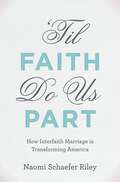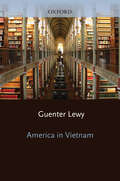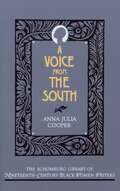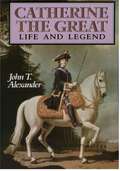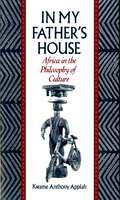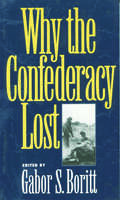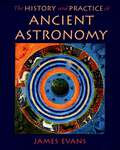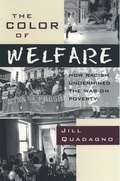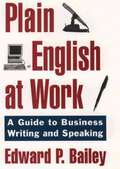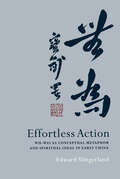- Table View
- List View
Japan and the Shackles of the Past
by R. Taggart MurphyJapan is one of the world's wealthiest and most technologically advanced nations, and its rapid ascent to global power status after 1853 remains one of the most remarkable stories in modern world history. Yet it has not been an easy path; military catastrophe, political atrophy, and economic upheavals have made regular appearances from the feudal era to the present. Today, Japan is seen as a has-been with a sluggish economy, an aging population, dysfunctional politics, and a business landscape dominated by yesterday's champions. Though it is supposed to be America's strongest ally in the Asia-Pacific region, it has almost entirely disappeared from the American radar screen. In Japan and the Shackles of the Past, R. Taggart Murphy places the current troubles of Japan in a sweeping historical context, moving deftly from early feudal times to the modern age that began with the Meiji Restoration. Combining fascinating analyses of Japanese culture and society over the centuries with hard-headed accounts of Japan's numerous political regimes, Murphy not only reshapes our understanding of Japanese history, but of Japan's place in the contemporary world. He concedes that Japan has indeed been out of sight and out of mind in recent decades, but contends that this is already changing. Political and economic developments in Japan today risk upheaval in the pivotal arena of Northeast Asia, inviting comparisons with Europe on the eve of the First World War. America's half-completed effort to remake Japan in the late 1940s is unraveling, and the American foreign policy and defense establishment is directly culpable for what has happened. The one apparent exception to Japan's malaise is the vitality of its pop culture, but it's actually no exception at all; rather, it provides critical clues to what is going on now. With insights into everything from Japan's politics and economics to the texture of daily life, gender relations, the changing business landscape, and popular and high culture, Japan and the Shackles of the Past is the indispensable guide to understanding Japan in all its complexity.
Handbook of Military and Veteran Suicide: Assessment, Treatment, and Prevention
For the past decade, suicidal behavior in military and veteran populations has been a constant feature in the news and in the media, with suicide rates among active duty American military personnel reaching their highest level in almost three decades. Handbook of Military and Veteran Suicide reviews the most advanced scientific understanding of the phenomenon of active duty and veteran suicide, while providing a useful, hands-on clinical guide for those working with this population. This comprehensive Handbook covers all relevant topics and current research in suicide in military and veteran populations, including links between suicide and PTSD, the stigma of mental health treatment in the military, screening for firearms access in military and veteran populations, "subintentioned" suicide (e.g. reckless driving and other such "accidental" deaths), women in combat, and working with families. Chapters also cover suicide risk assessment, ethical issues in treating suicidal patients, evidence-based treatments for PTSD, traumatic brain injury, and managing suicide in older veterans. Significant issues that may arise in assessing and treating military and veteran populations who are at risk for suicide are presented and discussed with evidence-based and practical recommendations. This Handbook will benefit researchers, policy makers, and clinicians who work with active duty military and veteran populations.
The Oxford Handbook Of Infant, Child, And Adolescent Sleep And Behavior
by Amy R. Wolfson Hawley E. Montgomery-DownsThe Oxford Handbook of Infant, Child, and Adolescent Sleep and Behavior (Oxford Library of Psychology)
by Amy R. Wolfson Hawley E. Montgomery-DownsSince the early 20th century, parenting books, pediatricians, and other health care providers have dispensed recommendations regarding children's sleep that frequently involved behavioral and educational approaches. In the last few decades, however, psychologists and other behavioral scientists and clinicians have amassed a critical body of research and clinical recommendations regarding developmental changes in sleep, sleep hygiene recommendations from infancy through adolescence, and behaviorally oriented treatment strategies for children and adolescents. The Oxford Handbook of Infant, Child, and Adolescent Sleep and Behavior provides a comprehensive and state-of-the-art review of current research and clinical developments in normal and disordered sleep from infancy through emerging adulthood. The handbook comprises seven sections: sleep and development; factors influencing sleep; assessment of sleep and sleep problems; sleep challenges, problems, and disorders; consequences of insufficient sleep; sleep difficulties associated with developmental and behavioral risks; and prevention and intervention. Written by international experts in psychology and related disciplines from diverse fields of study and clinical backgrounds, this handbook is a comprehensive resource that will meet the needs of clinicians, researchers, and graduate students with an interest in the multidisciplinary and emerging field of child and adolescent sleep and behavior.
Sufism for Non-Sufis?: Ibn 'Ata' Allah al-Sakandari's Taj al-'Arus
by Sherman A. JacksonSherman Jackson offers a translation and analysis of Ibn 'Ata' Allah al-Sakandari's Taj al-'Arus, a work on spiritual education steeped in the classical Sufi tradition, yet directed to those who have no affiliation with Sufism in any institutionalized form. Written in classical aphoristic style, the text is a treasure trove of spiritual wisdom and self-refinement, free of all of the usual barriers between Sufism and the common believer.
'Til Faith Do Us Part: How Interfaith Marriage is Transforming America
by Naomi Schaefer RileyIn the last decade, 45% of all marriages in the U.S. were between people of different faiths. The rapidly growing number of mixed-faith families has become a source of hope, encouraging openness and tolerance among religious communities that historically have been insular and suspicious of other faiths. Yet as Naomi Schaefer Riley demonstrates in 'Til Faith Do Us Part, what is good for society as a whole often proves difficult for individual families: interfaith couples, Riley shows, are less happy than others and certain combinations of religions are more likely to lead to divorce. Drawing on in-depth interviews with married and once-married couples, clergy, counselors, sociologists, and others, Riley shows that many people enter into interfaith marriages without much consideration of the fundamental spiritual, doctrinal, and practical issues that divide them. Couples tend to marry in their twenties and thirties, a time when religion diminishes in importance, only to return to faith as they grow older and raise children, suffer the loss of a parent, or experience other major life challenges. Riley suggests that a devotion to diversity as well as to a romantic ideal blinds many interfaith couples to potential future problems. Even when they recognize deeply held differences, couples believe that love conquers all. As a result, they fail to ask the necessary questions about how they will reconcile their divergent worldviews-about raising children, celebrating holidays, interacting with extended families, and more. An obsession with tolerance at all costs, Riley argues, has made discussing the problems of interfaith marriage taboo. 'Til Faith Do Us Part is a fascinating exploration of the promise and peril of interfaith marriage today. It will be required reading not only for interfaith couples or anyone considering interfaith marriage, but for all those interested in learning more about this significant, yet understudied phenomenon and the impact it is having on America.
The Rational Southerner: Black Mobilization, Republican Growth, and the Partisan Transformation of the American South
by M. V. Hood III Quentin Kidd Irwin L. MorrisSince 1950, the South has undergone the most dramatic political transformation of any region in the United States. The once Solid-meaning Democratic-South is now overwhelmingly Republican, and long-disenfranchised African Americans vote at levels comparable to those of whites. In The Rational Southerner, M.V. Hood III, Quentin Kidd, and Irwin L. Morris argue that local strategic dynamics played a decisive and underappreciated role in both the development of the Southern Republican Party and the mobilization of the region's black electorate. Mobilized blacks who supported the Democratic Party made it increasingly difficult for conservative whites to maintain control of the Party's machinery. Also, as local Republican Party organizations became politically viable, the strategic opportunities that such a change provided made the GOP an increasingly attractive alternative for white conservatives. Blacks also found new opportunities within the Democratic Party as whites fled to the GOP, especially in the deep South, where large black populations had the potential to dominate state and local Democratic Parties. As a result, Republican Party viability also led to black mobilization. Using the theory of relative advantage, Hood, Kidd, and Morris provide a new perspective on party system transformation. Following a theoretically-informed description of recent partisan dynamics in the South, they demonstrate, with decades of state-level, sub-state, and individual-level data, that GOP organizational strength and black electoral mobilization were the primary determinants of political change in the region. The authors' finding that race was, and still is, the primary driver behind political change in the region stands in stark contrast to recent scholarship which points to in-migration, economic growth, or religious factors as the locus of transition. The Rational Southerner contributes not only to the study of Southern politics, but to our understanding of party system change, racial politics, and the role that state and local political dynamics play in the larger context of national politics and policymaking.
Evaluation and Treatment of Myopathies (Contemporary Neurology Series #87)
by Emma Ciafaloni Patrick Chinnery Robert GriggsThis new edition of Evaluation and Treatment of Myopathies is written for the clinician who sees patients with muscle disease, or the patient with complaints of pain or weakness of muscle. Like the original, this new edition is divided in to 3 primary sections: Approach to the Patient with Muscle Disease, Specific Myopathies, and General Strategies of Clinical Management, each section providing practical guidance to eliciting key histories and demonstrate findings upon examination. This new edition also provides guidance on the next steps in diagnoses as well as the latest information on pathogenesis, diagnosis, and treatment, in an integrated manner, so as to give trainees, practicing clinicians and others who see neuromuscular disease perspective on how to evaluate and care for patients. New and revised tables, figures, and references are selected and organized to present information of clinical importance to provide the most up-to-date resource on the myopathies.
Let Thy Food Be Thy Medicine: Plants and Modern Medicine
by Kathleen HefferonAre herbal medicines effective? Are organic foods really better for you? Will the cure to cancer eventually come from a newly discovered plant which dwells in the Amazon basin? Will medicines ever become affordable and available to the neediest? How will we produce enough food to keep up with an ever-increasing world population? Written with these issues in mind, Let Thy Food Be Thy Medicine is a response to the current flood of conflicting information regarding the use of plants for both consumption and medicinal purposes. Kathleen Hefferon addresses the myths and popular beliefs surrounding the application of plants in human health, revealing both their truths and inaccuracies, and provides an overview of the technologies scientists are using to further their research. The book covers herbal medicines, functional and biofortified foods, plants and antibiotics, edible vaccines, and organic versus genetically modified foods, discussing each from a scientific standpoint. It these topics together for the first time, providing a much-needed overview of plants as medicine. Intended for scientists and professionals in related disciplines as well as the interested reader educated in the sciences, this book will confront claims made in the media with science and scientific analysis, providing readers with enough background to allow them to make their own judgments.
The Oxford Handbook of Education and Training in Professional Psychology (Oxford Library of Psychology)
by W. Brad Johnson Nadine KaslowThe Oxford Handbook of Education and Training in Professional Psychology provides the first comprehensive treatment of the processes and current state-of-the art practices bearing on educating and training professional psychologists. Thousands of psychologists are employed full-time as faculty members or clinical supervisors in graduate, practicum, internship, and postdoctoral training programs or training sites. This handbook provides a single resource that pulls together the substantial scholarship on education and training in psychology, covering the full spectrum of historic developments, salient issues, current standards, and emerging trends in psychology education and training. It provides a thorough analysis of doctoral and postdoctoral training for psychologists in clinical, counseling, or school psychology specialties. Because competency issues are moving to the forefront in the design of training programs and the evaluation of trainee performance, the handbook's authors have made models and standards for competency a primary theme. This volume captures the current state of education and training while emphasizing emerging trends and forecasting future directions.
Experience and Experimental Writing: Literary Pragmatism from Emerson to the Jameses
by Paul GrimstadAmerican pragmatism is premised on the notion that to find out what something means, look to fruits rather than roots. But, as Paul Grimstad shows, the thought of the classical pragmatists is itself the fruit of earlier experiments in American literature. Ralph Waldo Emerson, Edgar Allan Poe, Herman Melville, and (contemporaneously with the flowering of pragmatism) Henry James, each in their different ways prefigure at the level of literary form what emerge as the guiding ideas of classical pragmatism. Specifically, this occurs in the way an experimental approach to composition informs the classical pragmatists' central idea that experience is not a matter of correspondence but of an ongoing attunement to process. The link between experience and experiment is thus for Grimstad a way of gauging the deeper intellectual history by which literary experiments--Emerson's Essays; Poe's invention of the detective story in "The Murders in the Rue Morgue;" Melville's Pierre; and Henry James's late style--find their philosophical expression in classical pragmatism. Charles Peirce's notion of the "abductive" inference; William James's "radical empiricism;" and John Dewey's naturalist account of experience inform the book's readings. Experience and Experimental Writing also frames its set of claims in relation to more contemporary debates within literary criticism and philosophy that have so far not been taken up in this context: putting Richard Poirier's account of the relation of pragmatism to literature into dialogue with Stanley Cavell's inheritance of Emerson as someone decidedly not a "pragmatist;" to differences between classical pragmatists like William James and John Dewey and more recent, post-linguistic turn thinkers like Richard Rorty and Robert Brandom.
America in Vietnam
by Guenter LewyBased on a variety of classified military records, Lewy provides the first systematic analysis of the course of the Vietnam War, the reasons for the failure of American strategy and tactics, and the causes of the final collapse of South Vietnam.
Constitutional Fate: Theory of the Constitution
by Philip BobbittHere, Philip Bobbitt studies the basis for the legitimacy of judicial review by examining six types of constitutional argument--historical, textual, structural, prudential doctrinal, and ethical--through the unusual method of contrasting sketches of prominent legal figures responding to the constitutional crises of their day.
Railroads Triumphant: The Growth, Rejection, and Rebirth of a Vital American Force
by Albro MartinIn 1789, when the First Congress met in New York City, the members traveled to the capital just as Roman senators two thousand years earlier had journeyed to Rome, by horse, at a pace of some five miles an hour. Indeed, if sea travel had improved dramatically since Caesar's time, overland travel was still so slow, painful, and expensive that most Americans lived all but rooted to the spot, with few people settling more than a hundred miles from the ocean (a mere two percent lived west of the Appalachians). America in effect was just a thin ribbon of land by the sea, and it wasn't until the coming of the steam railroad that our nation would unfurl across the vast inland territory. In Railroads Triumphant, Albro Martin provides a fascinating history of rail transportation in America, moving well beyond the "Romance of the Rails" sort of narrative to give readers a real sense of the railroad's importance to our country. The railroad, Martin argues, was "the most fundamental innovation in American material life." It could go wherever rails could be laid--and so, for the first time, farms, industries, and towns could leave natural waterways behind and locate anywhere. (As Martin points out, the railroads created small-town America just as surely as the automobile created the suburbs.) The railroad was our first major industry, and it made possible or promoted the growth of all other industries, among them coal, steel, flour milling, and commercial farming. It established such major cities as Chicago, and had a lasting impact on urban design. And it worked hand in hand with the telegraph industry to transform communication. Indeed, the railroads were the NASA of the 19th century, attracting the finest minds in finance, engineering, and law. But Martin doesn't merely catalogue the past greatness of the railroad. In closing with the episodes that led first to destructive government regulation, and then to deregulation of the railroads and the ensuing triumphant rebirth of the nation's basic means of moving goods from one place to another, Railroads Triumphant offers an impassioned defense of their enduring importance to American economic life. And it is a book informed by a lifelong love of railroads, brimming with vivid descriptions of classic depots, lavish hotels in Chicago, the great railroad founders, and the famous lines. Thoughtful and colorful by turn, this insightful history illuminates the impact of the railroad on our lives.
A Voice From the South (The Schomburg Library of Nineteenth-Century Black Women Writers)
by Anna Julia CooperConsidered one of the original texts foretelling the black feminist movement, this collection of essays, first published in 1892, offers an unparalleled view into the thought of black women writers in nineteenth-century America. A leading black spokeswoman of her time, Anna Julia Cooper came of age during a conservative wave in the black community, a time when men completely dominated African-American intellectual and political ideas. In these essays, Cooper criticizes black men for securing higher education for themselves through the ministry, while erecting roadblocks to deny women access to those same opportunities, and denounces the elitism and provinciality of the white women's movement. Passionately committed to women's independence, Cooper espoused higher education as the essential key to ending women's physical, emotional, and economic dependence on men.
Catherine the Great: Life and Legend
by John T. AlexanderOne of the most colorful characters in modern history, Catherine II of Russia began her life as a minor German princess, until the childless Empress Elizabeth and Catherine's own scheming mother married her off to the Grand Duke Peter of Russia at age sixteen. By thirty-three, she had overthrown her husband in a bloodless coup and established herself as Empress of the multinational Russian Empire, the largest territorial political unit in modern history. Portrayed both as a political genius who restored to Russia the glory it had known in the days of Peter the Great and as a despotic foreign adventuress who usurped the Russian throne, murdered her rivals, and tyrannized her subjects, she was, by all accounts, an extraordinary woman. Catherine the Great, the first popular biography of the empress based on contemporary scholarship, provides a vivid portrait of Catherine as a mother, a lover, and, above all, an extremely savvy ruler. Concentrating on her long reign (1762-96), John Alexander examines all aspects of Catherine's life and career: the brilliant political strategies by which she won the acceptance of a nationalistic elite; her expansive foreign policy; the domestic reforms with which she revamped the Russian military, political structure, and economy; and, of course, her infamous love life. Beginning with an account of the dramatic palace revolt by which Catherine unseated her husband and a background chapter describing the circumstances of her early childhood and marriage, Alexander then proceeds chronologically through the thirty-four years of her reign. Presenting Catherine in more human terms than previous biographers have, Alexander includes numerous quotations from her reminiscences and notes. We learn, for instance, not only the names and number of her lovers, but her understanding of what many considered a shocking licentiousness. "The trouble is," she wrote, "that my heart would not willingly remain one hour without love." The result of twenty years' research by one of America's leading narrative historians of modern Russia, this truly impressive work offers a much-needed, balanced reappraisal of one of history's most scandal-ridden figures.
In My Father's House: Africa in the Philosophy of Culture
by Kwame Anthony AppiahThe beating of Rodney King and the resulting riots in South Central Los Angeles. The violent clash between Hasidim and African-Americans in Crown Heights. The boats of Haitian refugees being turned away from the Land of Opportunity. These are among the many racially-charged images that have burst across our television screens in the last year alone, images that show that for all our complacent beliefs in a melting-pot society, race is as much of a problem as ever in America. In this vastly important, widely-acclaimed volume, Kwame Anthony Appiah, a Ghanaian philosopher who now teaches at Harvard, explores, in his words, "the possibilities and pitfalls of an African identity in the late twentieth century." In the process he sheds new light on what it means to be an African-American, on the many preconceptions that have muddled discussions of race, Africa, and Afrocentrism since the end of the nineteenth century, and, in the end, to move beyond the idea of race. In My Father's House is especially wide-ranging, covering everything from Pan Africanism, to the works of early African-American intellectuals such as Alexander Crummell and W.E.B. Du Bois, to the ways in which African identity influences African literature. In his discussion of the latter subject, Appiah demonstrates how attempts to construct a uniquely African literature have ignored not only the inescapable influences that centuries of contact with the West have imposed, but also the multicultural nature of Africa itself. Emphasizing this last point is Appiah's eloquent title essay which offers a fitting finale to the volume. In a moving first-person account of his father's death and funeral in Ghana, Appiah offers a brilliant metaphor for the tension between Africa's aspirations to modernity and its desire to draw on its ancient cultural roots. During the Los Angeles riots, Rodney King appeared on television to make his now famous plea: "People, can we all get along?" In this beautiful, elegantly written volume, Appiah steers us along a path toward answering a question of the utmost importance to us all.
Why the Confederacy Lost (Gettysburg Civil War Institute Books)
After the Civil War, someone asked General Pickett why the Battle of Gettysburg had been lost: Was it Lee's error in taking the offensive, the tardiness of Ewell and Early, or Longstreet's hesitation in attacking? Pickett scratched his head and replied, "I've always thought the Yankees had something to do with it." This simple fact, writes James McPherson, has escaped a generation of historians who have looked to faulty morale, population, economics, and dissent as the causes of Confederate failure. These were all factors, he writes, but the Civil War was still a war--won by the Union army through key victories at key moments. With this brilliant review of how historians have explained the Southern defeat, McPherson opens a fascinating account by several leading historians of how the Union broke the Confederate rebellion. In every chapter, the military struggle takes center stage, as the authors reveal how battlefield decisions shaped the very forces that many scholars (putting the cart before the horse) claim determined the outcome of the war. Archer Jones examines the strategy of the two sides, showing how each had to match its military planning to political necessity. Lee raided north of the Potomac with one eye on European recognition and the other on Northern public opinion--but his inevitable retreats looked like failure to the Southern public. The North, however, developed a strategy of deep raids that was extremely effective because it served a valuable political as well as military purpose, shattering Southern morale by tearing up the interior. Gary Gallagher takes a hard look at the role of generals, narrowing his focus to the crucial triumvirate of Lee, Grant, and Sherman, who towered above the others. Lee's aggressiveness may have been costly, but he well knew the political impact of his spectacular victories; Grant and Sherman, meanwhile, were the first Union generals to fully harness Northern resources and carry out coordinated campaigns. Reid Mitchell shows how the Union's advantage in numbers was enhanced by a dedication and perseverance of federal troops that was not matched by the Confederates after their home front began to collapse. And Joseph Glatthaar examines black troops, whose role is entering the realm of national myth. In 1960, there appeared a collection of essays by major historians, entitled Why the North Won the Civil War, edited by David Donald; it is now in its twenty-sixth printing, having sold well over 100,000 copies. Why the Confederacy Lost provides a parallel volume, written by today's leading authorities. Provocatively argued and engagingly written, this work reminds us that the hard-won triumph of the North was far from inevitable.
The History and Practice of Ancient Astronomy
by James EvansThe History and Practice of Ancient Astronomy combines new scholarship with hands-on science to bring readers into direct contact with the work of ancient astronomers. While tracing ideas from ancient Babylon to sixteenth-century Europe, the book places its greatest emphasis on the Greek period, when astronomers developed the geometric and philosophical ideas that have determined the subsequent character of Western astronomy. The author approaches this history through the concrete details of ancient astronomical practice. Carefully organized and generously illustrated, the book can teach readers how to do real astronomy using the methods of ancient astronomers. For example, readers will learn to predict the next retrograde motion of Jupiter using either the arithmetical methods of the Babylonians or the geometric methods of Ptolemy. They will learn how to use an astrolabe and how to design sundials using Greek and Roman techniques. The book also contains supplementary exercises and patterns for making some working astronomical instruments, including an astrolabe and an equatorium. More than a presentation of astronomical methods, the book provides a critical look at the evidence used to reconstruct ancient astronomy. It includes extensive excerpts from ancient texts, meticulous documentation, and lively discussions of the role of astronomy in the various cultures. Accessible to a wide audience, this book will appeal to anyone interested in how our understanding of our place in the universe has changed and developed, from ancient times through the Renaissance.
The Color of Welfare: How Racism Undermined the War on Poverty
by Jill QuadagnoThirty years after Lyndon Johnson declared a War on Poverty, the United States still lags behind most Western democracies in national welfare systems, lacking such basic programs as national health insurance and child care support. Some critics have explained the failure of social programs by citing our tradition of individual freedom and libertarian values, while others point to weaknesses within the working class. In The Color of Welfare, Jill Quadagno takes exception to these claims, placing race at the center of the "American Dilemma," as Swedish economist Gunnar Myrdal did half a century ago. The "American creed" of liberty, justice, and equality clashed with a history of active racial discrimination, says Quadagno. It is racism that has undermined the War on Poverty, and America must come to terms with this history if there is to be any hope of addressing welfare reform today. From Reconstruction to Lyndon Johnson and beyond, Quadagno reveals how American social policy has continually foundered on issues of race. Drawing on extensive primary research, Quadagno shows, for instance, how Roosevelt, in need of support from southern congressmen, excluded African Americans from the core programs of the Social Security Act. Turning to Lyndon Johnson's "unconditional war on poverty," she contends that though anti-poverty programs for job training, community action, health care, housing, and education have accomplished much, they have not been fully realized because they became inextricably intertwined with the civil rights movement of the 1960s, which triggered a white backlash. Job training programs, for instance, became affirmative action programs, programs to improve housing became programs to integrate housing, programs that began as community action to upgrade the quality of life in the cities were taken over by local civil rights groups. This shift of emphasis eventually alienated white, working-class Americans, who had some of the same needs--for health care, subsidized housing, and job training opportunities--but who got very little from these programs. At the same time, affirmative action clashed openly with organized labor, and equal housing raised protests from the white suburban middle-class, who didn't want their neighborhoods integrated. Quadagno shows that Nixon, who initially supported many of Johnson's programs, eventually caught on that the white middle class was disenchanted. He realized that his grand plan for welfare reform, the Family Assistance Plan, threatened to undermine wages in the South and alienate the Republican party's new constituency--white, southern Democrats--and therefore dropped it. In the 1960s, the United States embarked on a journey to resolve the "American dilemma." Yet instead of finally instituting full democratic rights for all its citizens, the policies enacted in that turbulent decade failed dismally. The Color of Welfare reveals the root cause of this failure--the inability to address racial inequality.
The Plain English Approach to Business Writing
by Edward P. BaileyIn offices across America, the Masters of Gobbledygook are hard at work. They're bombarding in-boxes with those long, confusing memos that colleagues don't have the patience to read--and bosses don't have the time to rewrite. They use words like "commence" or "prior to" instead of "begin" or "before." They bury their main point somewhere in the last paragraph--and take two pages to get there. Everybody knows one of them; in fact, you may even be one of them. But now there's help for anyone who's ever fallen prey to businessese, academese, legalese, or any other "ese" when faced with a blank memo pad. In The Plain English Approach to Business Writing, Edward Bailey--who spent twenty years working in the bastions of bureaucratese--offers readers a powerful new communications tool. Written for busy professionals who want to improve the quality and clarity of their own (or their staff's) writing style, this no-nonsense guide is an indispensable office companion. Bailey's approach is 5urprisingly straightforward: just write as you would talk. Plain English is not only easier to read; it's also easier to write. And it's so effective that many large organizations are endorsing, if not demanding, its use in the work place. Pithy and entertaining, Bailey points out all the dos and don'ts of plain English. He then illustrates them with examples drawn from a wide array of sources, including business documents, technical manuals, trade publications like Consumer Reports, and the works of writers such as Russell Baker and John D. MacDonald. From the basics to the fine tuning, he offers practical advice on clarity and precision, organization, layout, and a host of other important writing topics. A delightful, down-to-earth guide, The Plain English Approach to Business Writing is for professionals of all backgrounds (government, military, legal, financial, technical, corporate) and staff at all levels (from the company CEO to the ambitious secretary). The Plain English Approach to Business Writing can be read in an hour--and used for the rest of one's life.
The Signifying Monkey: A Theory of African American Literary Criticism
by Henry Louis Gates, Jr.Hailed in The New York Times Book Review as "eclectic, exciting, convincing, provocative" and in The Washington Post Book World as "brilliantly original," Henry Louis Gates, Jr.'s The Signifying Monkey is a groundbreaking work that illuminates the relationship between the African and African-American vernacular traditions and black literature. It elaborates a new critical approach located within this tradition that allows the black voice to speak for itself. Examining the ancient poetry and myths found in African, Latin American, and Caribbean culture, Gates uncovers a unique system for interpretation and a powerful vernacular tradition that black slaves brought with them to the New World. Exploring the process of signification in black American life and literature by analyzing the transmission and revision of various signifying figures, Gates provides an extended analysis of what he calls the "Talking Book," a central trope in early slave narratives that virtually defines the tradition of black American letters. Gates uses this critical framework to examine several major works of African-American literature--including Zora Neale Hurston's Their Eyes Were Watching God, Ralph Ellison's Invisible Man, and Ishmael Reed's Mumbo Jumbo--revealing how these works signify on the black tradition and on each other. This superb 25th-Anniversary Edition features a new preface by Gates that reflects on the impact of the book and its relevance for today's society as well as a new afterword written by noted critic W. T. J. Mitchell.
The Scleroderma Book: A Guide for Patients and Families
by Maureen D. MayesThe Scleroderma Book has long been considered the leading source of information for patients suffering with this disease. Now comes the Second Edition of this highly respected volume, extensively revised by Maureen Mayes, M.D., the leading authority in this field. Writing specifically for patients and their families, Dr. Mayes draws on her extensive experience treating scleroderma to provide up-to-date, practical information that will help patients manage their symptoms and improve their quality of life. Dr. Mayes begins with an easily accessible description of the basic facts, distinguishing between the many manifestations of the disease, ranging from localized scleroderma (small patches of hardened skin, most common in children, which tend to clear up over time) to systemic scleroderma, which can attack the lungs, the kidneys, and the blood vessels, and can be life threatening. Equally important, she offers sympathetic and reassuring advice on matters that often concern patients, such as the best course of action for those who want children, what to do if the disease affects your sex life, and what you can do to help your doctor treat your illness more effectively. The book concludes with a good humored, frank discussion about how to cope, day in and day out, with an uncertain future--how to be a "person living with" scleroderma, not a "victim suffering from" it. The new edition has updated chapters on the genetics of scleroderma and on new treatments for complications of this disease. Touching on virtually every aspect of this disorder, The Scleroderma Book provides a reliable source of information and reassurance for patients of any age and no matter how severe their form of the disease. Endorsed by the leading national advocate group, The Scleroderma Foundation
Ecology of Predator-Prey Interactions
by Pedro Barbosa Ignacio CastellanosThis book addresses the fundamental issues of predator-prey interactions, with an emphasis on predation among arthropods, which have been better studied, and for which the database is more extensive than for the large and rare vertebrate predators. The book should appeal to ecologists interested in the broad issue of predation effects on communities.
Effortless Action: Wu-wei As Conceptual Metaphor and Spiritual Ideal in Early China
by Edward SlingerlandThis book presents a systematic account of the role of the personal spiritual ideal of wu-wei--literally "no doing," but better rendered as "effortless action"--in early Chinese thought. Edward Slingerland's analysis shows that wu-wei represents the most general of a set of conceptual metaphors having to do with a state of effortless ease and unself-consciousness. This concept of effortlessness, he contends, serves as a common ideal for both Daoist and Confucian thinkers. He also argues that this concept contains within itself a conceptual tension that motivates the development of early Chinese thought: the so-called "paradox of wu-wei," or the question of how one can consciously "try not to try." Methodologically, this book represents a preliminary attempt to apply the contemporary theory of conceptual metaphor to the study of early Chinese thought. Although the focus is upon early China, both the subject matter and methodology have wider implications. The subject of wu-wei is relevant to anyone interested in later East Asian religious thought or in the so-called "virtue-ethics" tradition in the West. Moreover, the technique of conceptual metaphor analysis--along with the principle of "embodied realism" upon which it is based--provides an exciting new theoretical framework and methodological tool for the study of comparative thought, comparative religion, intellectual history, and even the humanities in general. Part of the purpose of this work is thus to help introduce scholars in the humanities and social sciences to this methodology, and provide an example of how it may be applied to a particular sub-field.




